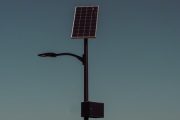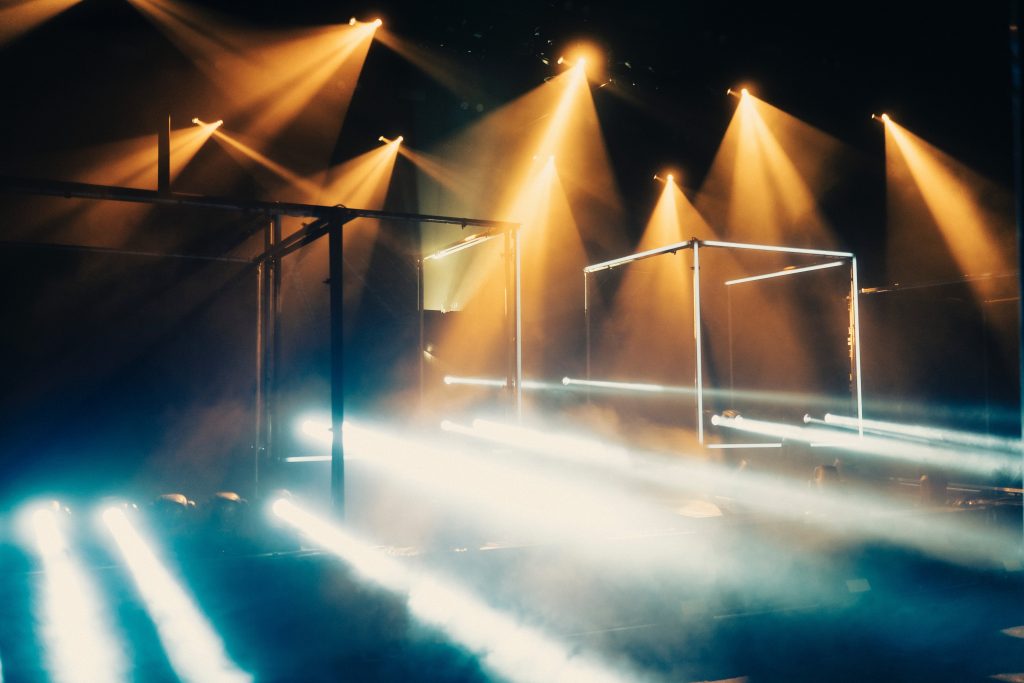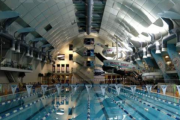For hundreds of thousands of years, human beings have been using firelight to illuminate, until human beings have known and mastered the law of electricity and invented the electric light source, the history of human lighting with lamps has entered a new stage.
The beginning of using electric energy for lighting
In 1802, Russian physics professor Pedrov was inspired by the fact that American physicist Franklin used the method of flying kites to lead to sparks: can the electric sparks generated when the two ends of the battery pack are connected by wires become lasting lights for illumination ? He found the “arc” and thought that “if two carbon rods are close to each other, a very bright white light or white flame will appear between them, which makes the carbon rods burn quickly or slowly, and can completely illuminate the dark room.” This is the earliest statement about electrical lighting, marking a historic step in the process of human transformation from electricity to light.
In 1809, David, a British chemist, made a large battery by himself, which used 2000 voltaic batteries and got a stronger and brighter arc. Pedrov is similar to David’s experimental device, which is actually the rudiment of a new kind of lamp carbon arc lamp.
About 30 years later, some people replaced ordinary charcoal with hard and dense coke, and the arc shining time was prolonged a lot. Later, French scientists installed a clock and watch device on the arc light device, so that it can automatically adjust the distance between two carbon rods. In this way, the first carbon arc lamp was officially born.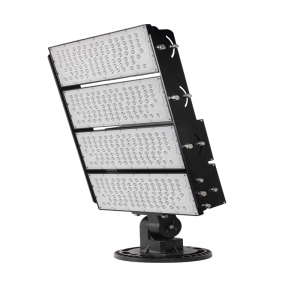
In 1876, the Russian electrician Yabulochkov made a great reform of the arc lamp, making two carbon rods stand side by side with an insulating sheet in the middle. He also uses a device that can constantly change the direction of the current, so that the two carbon rods alternately act as anode and cathode, so that the burning rate of the two carbon rods is basically the same, and the distance between the ends can remain unchanged. Because the two carbon rods standing side by side are like candles when they shine, people call them “electric candles”. Each electric candle can last for about 2 hours.
In the later years of 1870s, electric candle was once popular because its luminous efficiency was higher than that of gas lamp, reaching 40-60lm / W. Electric candles invested and manufactured by the French General Electric Association have been used as street lamps. In Paris alone, thousands of electric candles have been used instead of tens of thousands of kerosene lamps on the streets. The advent of arc lamp has opened up a new era of electrical lighting, but the electric candle consumes a lot of electricity, has a short life, radiates a lot of ultraviolet rays, releases harmful gases, and is difficult to maintain. So after the incandescent lamp appeared, it was completely eliminated in the field of lighting.
The invention of the first incandescent lamp
The light source whose current flows through the conductor makes it hot and luminous is called incandescent lamp. On October 21, 1879, Edison, the great American inventor, made the world’s first practical incandescent lamp in his laboratory. Edison summed up the previous experience and improved the carbonization method. He filled a piece of cotton thread with carbon powder, bent it into a horseshoe shape, put it into a clay crucible, heated it at high temperature to make a lamp wire conductor, and then sealed the carbon wire into the glass shell to extract the air inside to form the first vacuum carbon filament incandescent lamp.
The light efficiency of this lamp is about 1.41m/w when it is ignited for about 45h. This is because although the melting point of carbon is relatively high (at least 4100k), its emission efficiency is less than 1, and the evaporation rate is very high, which makes it impossible to make long-life and high luminous efficiency lamps. The carbon filament incandescent lamp designed in 1881 has a service life of 600H and a luminous efficiency of less than 20lm / W.
Development History of Electric Light Source
Let’s review the development history of electric light source from the following aspects
- Thermal radiation source
In 1906, the first tungsten filament vacuum incandescent lamp was manufactured. In 1913, the incandescent lamp filled with argon nitrogen mixture was put on the market. In 1959, the halogen tungsten lamp filled with iodine was manufactured. The service life and luminous efficiency of the incandescent lamp are increased by the tungsten halogen lamp. The service life is 2000-3000h and the luminous efficiency is 20-251m / W. In 1963, tantalum carbide filament was successfully used in incandescent lamps. The color temperature of the lamps was 3500-3600k, and the luminous efficiency was higher than that of tungsten halogen lamps.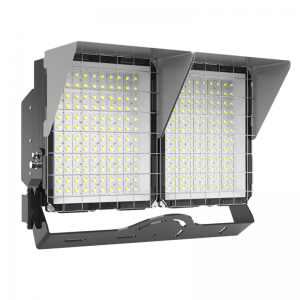
- Gas discharge light source
At the beginning of the 20th century, gas discharge lamps filled with inert gas appeared. The earliest lamp was filled with neon gas, called neon lamp, which emitted orange light; filled with argon gas, which emitted blue violet light; filled with carbon dioxide, which emitted white light. The luminous efficiency of this kind of gas discharge lamp is 10 ~ 201m / W.
In 1923, Compton and van washes lit the first low-pressure sodium lamp with a luminous efficiency of more than 200 LM / W. however, it was not until 1932 that the low-pressure sharp lamp really entered the currency market.
In 1936, the fluorescent lamp was made. Because of the low pressure of mercury vapor in the tube, it is also called low pressure discharge lamp. The first large-scale use of fluorescent lamps was at the 1939 New York World Expo, when the luminous efficiency of lamps was about 40 im / W.
In 1973, a fluorescent lamp with red, green and blue narrow spectrum rare earth phosphors was manufactured, which is called “three primary colors” fluorescent lamp. The luminous efficiency can be increased to more than 80lm / W. Compact fluorescent lamp (single ended fluorescent lamp) was manufactured in 1980, and high frequency electrodeless fluorescent lamp was manufactured in 1991.
At the end of 1906, kueher and reichensky first discovered high pressure mercury vapor discharge, but it was not until 1930s that they made high pressure mercury vapor discharge lamp. Metal halide lamps were made in 1964. In 1966, high pressure sodium lamp appeared on the market.
In 1802, Ritter discovered ultraviolet light, but it was not until the 1930s that man made the first ultraviolet lamp. UV light that can be put into practice
Light sources didn’t appear until the 1960s. Ultraviolet lamp is widely used in medicine, industry, fishery, agriculture, textile, printing and other industries.
Chemical flash was made in 1930s. This kind of light was mainly used for photography and was gradually replaced by electronic flash. In 1960, Mayman first designed Ruby solid-state laser. In 1961, Javan first described He Ne gas laser. Laser is named after the first letter of “light amplification by stimulated emission of radiation”. Laser factories are widely used in science, communication, industry, medicine and military fields.
In 1910, the world’s first commercial neon lamp made by Claude, the French science tomb, was installed in the palace building in Paris
Lighting decoration is a success.
In the 1930s, the fluorescent neon lamp was produced, which greatly enriched the color of neon lamp. After the 1970s, the application of rare earth trichromatic phosphors opened up a new stage in the history of neon lamp. Neon was introduced into China in 1926. In 1927, China’s first domestic neon billboard light was installed in Shanghai Central Hotel.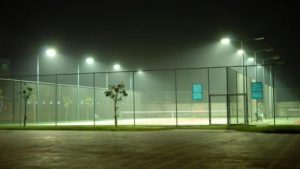
- Electroluminescence light source
In 1936, Dasteo discovered that some phosphors were placed in a sufficiently strong cross-section. It can emit light in a variable electric field. A practical electroluminescence device was made in 1958 (Light source EL panel). In 1962, a practical led was made(LED), which emits red light with a luminous efficiency of only 0.1lm/w, produced green light in 1968, LED blue light in 1994, Led solves the problem of three primary colors missing. White LED was made in 1996, and LED was introduced to the market in 1998. The development of Solid state luminescence light source is rapid, from the initial monochromatic light, the luminous efficiency is 0.1im/w to the full-color light, the luminous efficiency is 40lm ~ 80lm / W, from the initial application in indicators and displays to the application in general lighting. In the field of lighting, it shows a good application prospect.
What is Incandescent Lamp?
Thermal radiation is a phenomenon caused by the internal thermal movement of objects.
Any object has thermal radiation. The higher the temperature, the greater the thermal radiation intensity. When the temperature is low, it radiates infrared; when the temperature reaches 500 ° C, it produces dark red visible light; when the temperature reaches 1500 ° C, it emits incandescent light. The spectrum of thermal radiation is continuous spectrum. The light source made according to the principle of thermal radiation is called thermal radiation light source.
Incandescent lamp is made of electricity according to the principle of heat radiation
Light source. It glows by heating the filament with an electric current. Because the filament works in a hot state, it is called incandescent lamp.
The filament is usually a spiral tungsten filament, which is installed in a transparent glass shell and can be filled with vacuum or inert gas. Incandescent lamp generally below 40W is vacuum bulb, above 40W is inflatable bulb.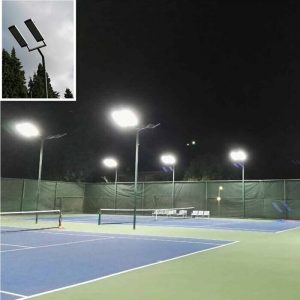
The characteristics of the incandescent lamp are low price, simple circuit, direct lighting without auxiliary devices, can work in a wide ambient temperature, similar to a point light source, and facilitate good optical control. Its disadvantages are: the luminous efficiency is relatively low (10 ~ 25lm / W); the temperature of glass shell is high when ignited; the service life is short (1000h), the service life is greatly affected by the change of power supply voltage , the voltage increases by 5%, and the service life is shortened by nearly 20%, the infrared radiation is large, which affects the service range, the service life will be shortened due to heating vibration or mechanical vibration.
Incandescent bulbs are not all vacuum. Generally, the incandescent lamp below 40W is vacuum, and the lamp above 40W is inflatable. Generally, it is a mixture of nitrogen and argon, in which nitrogen is 8% – 14% and argon is 86% – 92%. Although krypton and xenon gas have less heat conduction loss, they are only used in special bulbs because of their high price.
There are several types of fluorescent lamps for lighting usually:
(1) According to the structure, there are double ended fluorescent lamp (straight tube), single ended fluorescent lamp, self ballasted fluorescent lamp and electrodeless fluorescent lamp.
(2) According to the electrode structure of lamp, there are hot cathode lamp (including preheating fluorescent lamp, quick start fluorescent lamp and instant start fluorescent lamp), cold cathode lamp and electrodeless lamp. Among them:
- Preheating lamp: the lamp electrode needs to be preheated before starting. Generally, the starter is used to preheat the filament, or manually.
- Instantaneous start lamp: the lamp electrode does not need to be preheated, and can be started with high voltage in cold state. Only one pin is needed at each end of the lamp.
- Fast moving lamp: the lamp electrode is preheated by the electrode heating coil in the ballast without starter.
At present, the commonly used fluorescent lamps in China are mainly preheating type.
(3) According to the classification of coating materials, the lamps coated with halophosphate phosphor are ordinary fluorescent lamps, which can produce fluorescent lamps with various color temperatures of 2500-7500k. The disadvantage is that the light efficiency is relatively low and the color rendering is poor. The lamp coated with rare earth phosphor (which can produce red, green and blue narrow band spectrum) is called “three color” fluorescent lamp. It is characterized by high light efficiency and good color rendering.
(4) Classified by light color, there are warm white, standard white, sunlight color, etc., which can adapt to the needs of different environments.
When the content of activator manganese and antimony in the phosphor is changed, the color of phosphor can be changed from blue to orange, including different white light.
At present, there are six colors of “white” fluorescent lamps: daylight color (6500k), neutral white (5000K), cold white (4000K), white (3500K), warm white (3000K) and incandescent lamp color (2700k).
The lamp with “three primary colors” phosphor can be produced by changing the ratio of red, green and blue phosphor.



